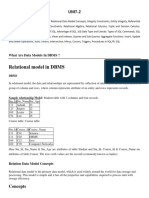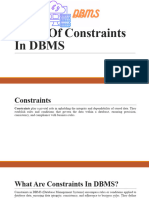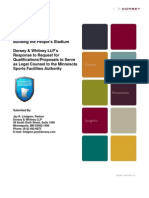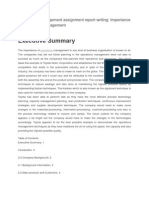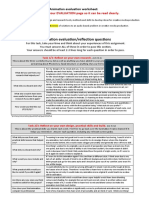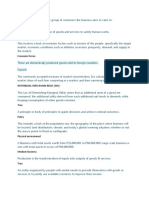0% found this document useful (0 votes)
123 views12 pagesReferential Integrity in DBMS
Referential integrity in Database Management Systems (DBMS) involves rules that ensure data accuracy and consistency by maintaining valid relationships between tables through constraints like primary keys and foreign keys. Integrity constraints, including domain, entity, and key constraints, help prevent errors and ensure data quality by enforcing specific standards for data entry. Functional dependencies further enhance data organization and integrity by defining relationships between attributes, thereby reducing redundancy and improving overall data management.
Uploaded by
parthmanjrekar12Copyright
© © All Rights Reserved
We take content rights seriously. If you suspect this is your content, claim it here.
Available Formats
Download as PDF, TXT or read online on Scribd
0% found this document useful (0 votes)
123 views12 pagesReferential Integrity in DBMS
Referential integrity in Database Management Systems (DBMS) involves rules that ensure data accuracy and consistency by maintaining valid relationships between tables through constraints like primary keys and foreign keys. Integrity constraints, including domain, entity, and key constraints, help prevent errors and ensure data quality by enforcing specific standards for data entry. Functional dependencies further enhance data organization and integrity by defining relationships between attributes, thereby reducing redundancy and improving overall data management.
Uploaded by
parthmanjrekar12Copyright
© © All Rights Reserved
We take content rights seriously. If you suspect this is your content, claim it here.
Available Formats
Download as PDF, TXT or read online on Scribd
/ 12






